Understanding LED PCB Board Prices: A Comprehensive Guide
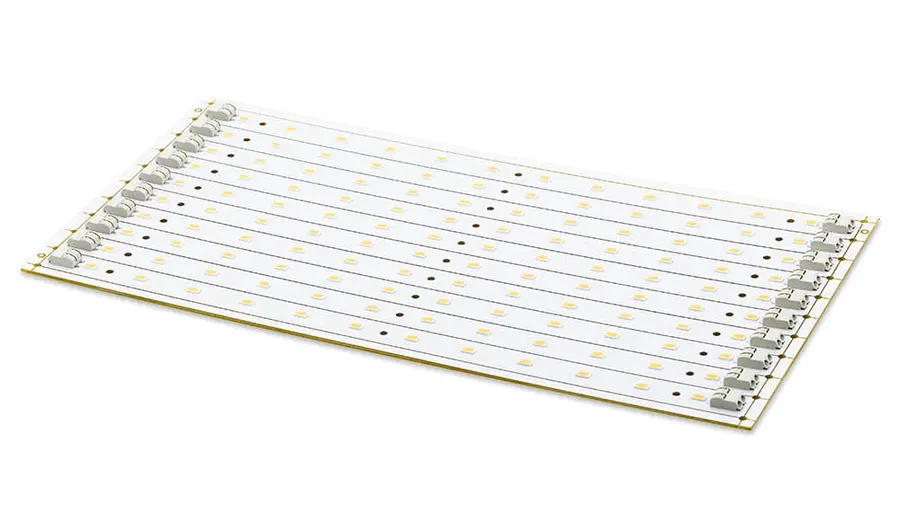
In today's world, LEDs have revolutionized lighting, and at the heart of every LED lighting system is the Printed Circuit Board (PCB). But what affects the led pcb board price? This article demystifies the pricing of LED PCBs, exploring materials, design complexity, and quantity influences, while also offering practical tips to optimize your costs.
The Core Components of an LED PCB and Their Impact on Price

The price of an LED PCB board is fundamentally determined by its core components: the substrate material, the conductive copper layers, and the surface finish. These elements collectively dictate the board's performance, durability, and, ultimately, its cost. Understanding how each contributes to the final price is crucial for effective cost management.
- Substrate Materials
The substrate, the base material of the PCB, significantly impacts cost. Common choices include FR-4, aluminum, and flexible polyimide. FR-4, a glass-reinforced epoxy laminate, is cost-effective and widely used for its mechanical and electrical properties. Aluminum substrates (MCPCBs) offer superior thermal conductivity, essential for high-power LEDs, but are generally more expensive. Flexible substrates like polyimide allow for non-planar applications, but typically command a premium price due to specialized processing. - Conductive Copper Layers
The number of copper layers and their thickness directly correlate with cost. Single-layer PCBs are the most economical, suitable for simple LED applications. Double-layer boards add routing flexibility and heat dissipation. Multi-layer boards, with more than two copper layers, offer complex routing and impedance control but significantly increase costs. Thicker copper layers enhance current carrying capacity and heat distribution, but also lead to higher material costs. - Surface Finish
The surface finish protects the copper traces from oxidation and ensures solderability. Common finishes include HASL (Hot Air Solder Leveling), ENIG (Electroless Nickel Immersion Gold), and OSP (Organic Solderability Preservative). HASL is the most cost-effective but can be less precise, particularly for fine-pitch components. ENIG provides excellent solderability and durability but is more expensive. OSP is a cost-effective, lead-free alternative but has a shorter shelf life and less durability than ENIG.
Factors Influencing LED PCB Board Price: A Deep Dive
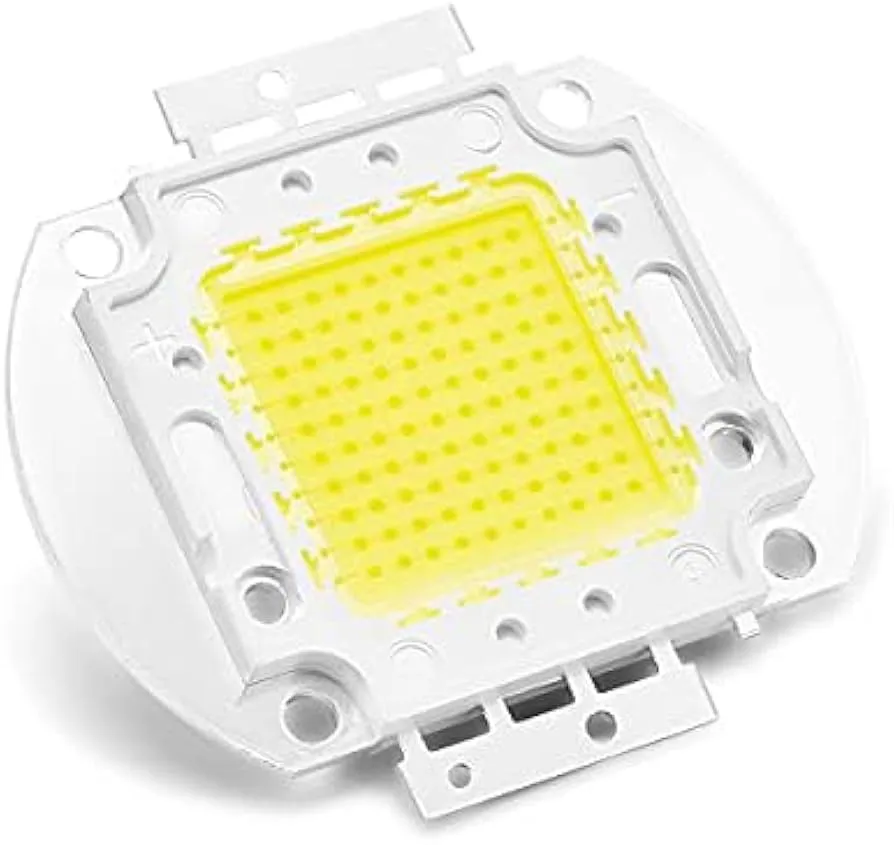
The price of an LED PCB board is not arbitrary; it's a function of several critical design and material choices. Understanding these factors allows for informed decision-making and cost optimization in your LED lighting projects. Key influences include the substrate material, the number of layers, the copper thickness, and the surface finish applied.
| Factor | Description | Impact on Price |
|---|---|---|
| Substrate Material | The base material upon which the circuit is built (e.g., FR-4, aluminum, ceramic). | Aluminum substrates (MCPCBs) are generally more expensive than FR-4 due to enhanced thermal conductivity. Ceramic substrates are the most costly due to superior performance. |
| Layer Count | The number of conductive layers in the PCB. Single-layer PCBs are the simplest, while multilayer boards have two or more. | More layers increase complexity and manufacturing costs, requiring additional processes. |
| Copper Thickness | The thickness of the copper traces, typically measured in ounces per square foot. | Thicker copper provides better current handling and heat dissipation, but increases material costs. |
| Surface Finish | The coating applied to exposed copper (e.g., HASL, ENIG, OSP). | Finishes like ENIG offer better solderability and corrosion resistance but come at a higher price than HASL or OSP. HASL is the most cost-effective |
| PCB Size and Complexity | The physical dimensions of the PCB and the intricacy of its layout. | Larger boards and more complex designs generally require more material and processing time, leading to higher costs. |
Types of LED PCBs and Their Price Variations

The cost of an LED PCB board is significantly influenced by its type, primarily determined by the substrate material and its construction. Different applications require specific types of PCBs, which leads to variations in price. This section will explore the price drivers associated with the three most common types of LED PCBs: rigid, flexible, and aluminum-backed (MCPCBs).
| PCB Type | Material | Typical Applications | Cost Factor | Price Range (Relative) |
|---|---|---|---|---|
| Rigid PCB | FR-4, CEM-1 | General lighting, consumer electronics | Base material, layer count | Low to Medium |
| Flexible PCB (Flex PCB) | Polyimide | Wearable devices, curved lighting | Material cost, precision manufacturing | Medium to High |
| Metal Core PCB (MCPCB) | Aluminum, Copper | High-power LED lighting, thermal management | Metal base, thermal properties | Medium to High |
Rigid PCBs, commonly made of FR-4, represent the most traditional and cost-effective option. Their price is influenced by the number of layers and the complexity of the circuit design. Flexible PCBs, made from materials like polyimide, are more expensive due to their higher material costs and intricate manufacturing processes. MCPCBs, characterized by a metal backing such as aluminum, are essential for applications with high thermal requirements. The use of a metal substrate improves heat dissipation, but also increases the cost due to the specialized manufacturing required.
The selection of the appropriate PCB type is crucial not only for performance but also for cost efficiency. Considering the specific demands of your project will guide you to the best choice between the price and functionality, taking into account factors like mechanical stress, heat management, and space constraints.
Manufacturing Processes and Their Impact on LED PCB Cost
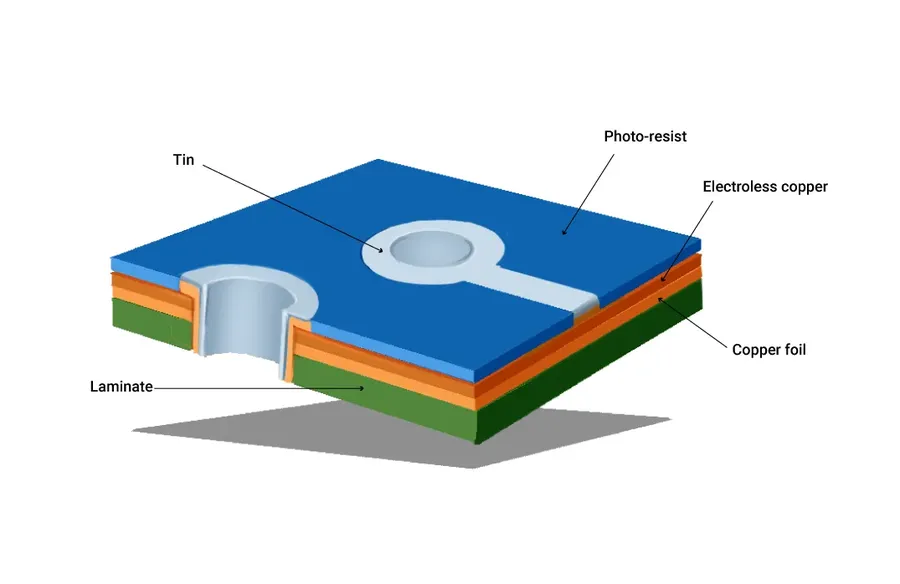
The cost of an LED PCB board is significantly influenced by the manufacturing processes employed. These processes, ranging from component placement to soldering techniques, directly impact the efficiency, yield, and ultimately, the price of the final product. Optimizing these processes is key to achieving cost-effective LED PCB production.
| Manufacturing Process | Description | Impact on Cost | Efficiency & Automation |
|---|---|---|---|
| Surface Mount Technology (SMT) | Automated process of placing components directly onto the surface of the PCB. | Lower labor costs, higher speed and volume production, precise placement. Can reduce costs but requires upfront investment in equipment. | High efficiency due to automated placement and soldering; well-suited for large volumes |
| Through-Hole Technology (THT) | Inserting component leads into drilled holes on the PCB, typically followed by manual soldering. | Higher labor costs due to manual assembly and soldering steps. More suitable for larger components. Typically more expensive than SMT for high-volume production. | Lower efficiency, suitable for prototyping and low-volume or specialized components |
| Wave Soldering | Soldering method where PCBs pass over a wave of molten solder to connect components. | Cost-effective for through-hole components in high volumes. Requires specific setup and preparation and is less versatile than other techniques. | High volume but limited flexibility, suitable for through-hole assembly |
| Reflow Soldering | Soldering process used for SMT, where solder paste is heated to melt and join components to the board. | Enables high volume, accurate placement with automated process. Requires specific equipment but can lead to lower overall cost for SMT | High efficiency and precision suitable for SMT, used in high-volume PCB production |
| Automated Optical Inspection (AOI) | Utilizing cameras to inspect PCBs for defects post-soldering. | Reduces defects, rework costs, improves reliability but also adds a minor cost to the production process. | High efficiency, critical for quality control in high volume production. |
| Pick and Place Machines | Robotic machines designed to accurately place components on PCBs. | Reduces labor costs, increases placement accuracy, significantly improves throughput and reduces errors. | Increases precision and placement speeds while minimizing errors |
Quantity vs. Cost: Economies of Scale in LED PCB Production
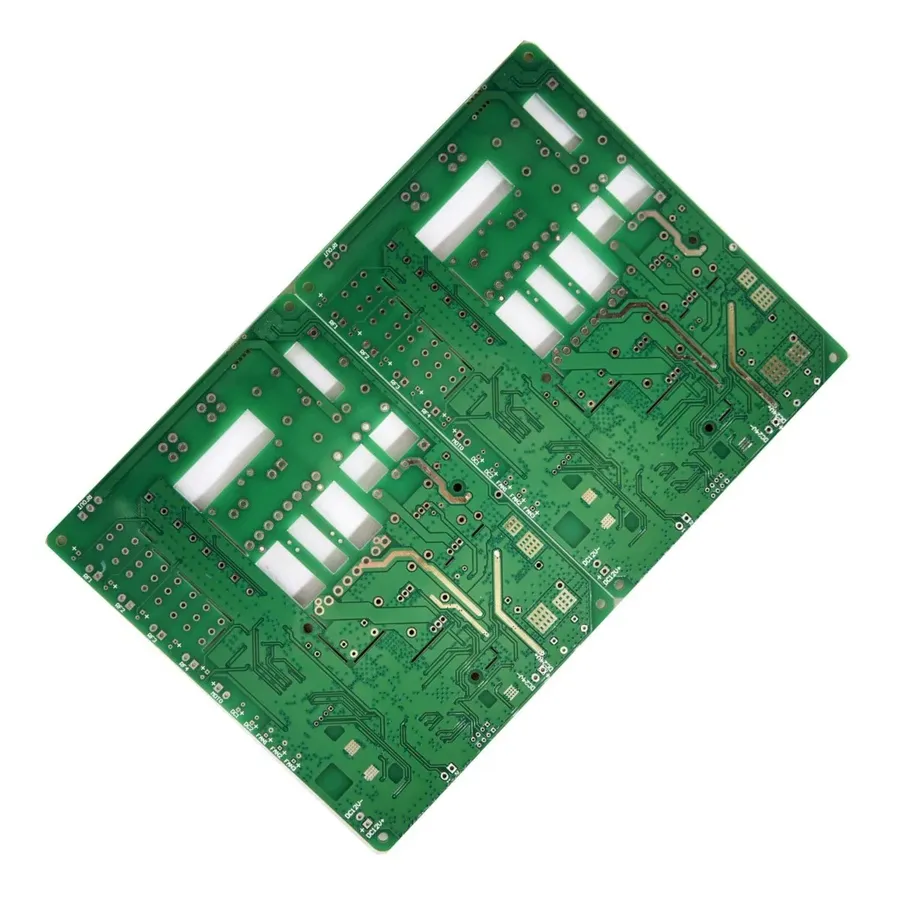
The relationship between order quantity and per-unit cost of LED PCB boards is governed by the principle of economies of scale. As the volume of PCBs ordered increases, the cost per unit tends to decrease, primarily due to the fixed costs of production being spread over a larger number of units, in addition to volume discounts from suppliers.
This effect is a cornerstone of manufacturing efficiency and is critical for optimizing the financial aspect of any PCB project. Below, we explore the elements that contribute to this effect and offer effective strategies to leverage them.
- Fixed Cost Allocation
Setup costs, tooling expenses, and initial design costs remain relatively constant regardless of the order size. When these costs are allocated across a large number of units, the burden per PCB is significantly reduced. - Raw Material Discounts
Bulk purchases of raw materials, such as substrate laminates, copper foil, and solder resist, often come with volume discounts from suppliers. This can substantially lower the material cost per board in high-volume orders. - Production Efficiency
Large-scale production runs optimize the usage of production lines. The continuous operation minimizes downtime for setups and changeovers, thereby lowering manufacturing costs and increasing throughput. - Reduced Shipping Costs
Shipping costs per unit can decrease with larger orders due to the consolidation of shipments. This is particularly noticeable for international shipments where transportation is a significant factor. - Inventory Management
Ordering in larger quantities can lead to lower inventory holding costs per unit and reduce the frequency of order cycles. Moreover, larger batches can also create opportunities for negotiating with PCB assemblers.
Leveraging these economies of scale is essential for cost-effective PCB production. Consider these strategies when placing an order:
- Demand Forecasting
Accurate demand forecasting allows you to order the optimal number of PCBs to benefit from economies of scale, reducing per-unit cost without excessive inventory holding cost. - Consolidation of Orders
Combine multiple projects or products into a single order. Even if some PCBs are needed later, the savings on larger batches may be more significant than smaller individual orders. - Strategic Supplier Selection
Choose suppliers that are equipped to handle large-volume orders. Check if suppliers offer volume-based discounts and compare quotes to maximize cost-effectiveness. This should be a consistent practice. - Negotiation
Negotiate with your supplier based on order volumes. Larger orders often lead to better pricing through price breaks, and it's worth the effort to explore all possible savings. - Design Optimization for Volume
Design your PCB to facilitate mass production. Using standard sizes and avoiding complex features can reduce costs in high-volume production runs. Streamlined manufacturing increases the cost effectiveness of a larger order.
Custom vs. Standard LED PCB Designs: Cost Implications
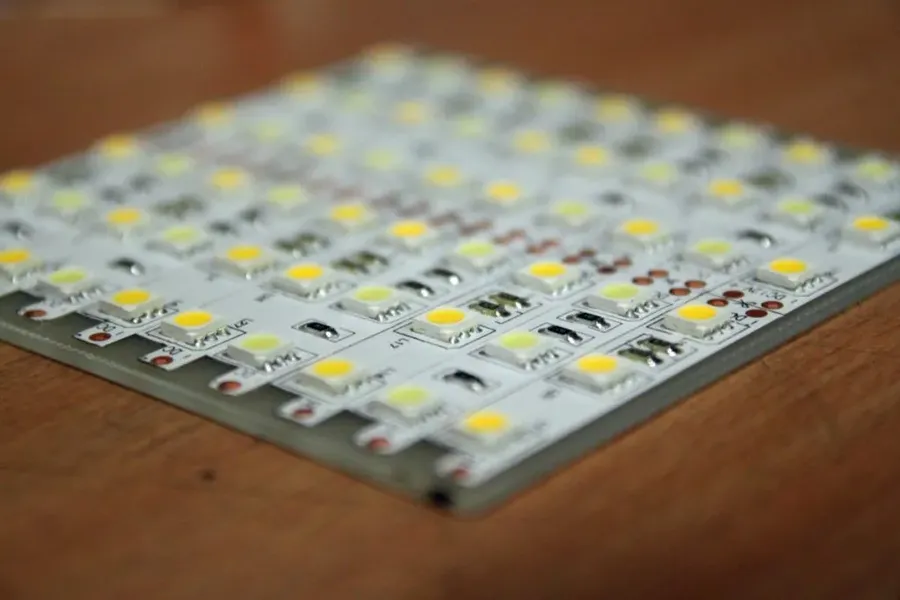
The choice between custom and standard LED PCB designs significantly impacts the overall project cost. Standard, or off-the-shelf, LED PCBs offer a lower entry price point due to their mass production and readily available designs. However, they might not perfectly fit specific application needs. Conversely, custom-designed PCBs, while more expensive initially, can provide tailored solutions that optimize performance and reduce long-term costs.
| Feature | Standard LED PCB | Custom LED PCB |
|---|---|---|
| Initial Cost | Lower | Higher |
| Design Flexibility | Limited | High |
| Lead Time | Shorter | Longer |
| Application Fit | May require compromises | Optimized for specific requirements |
| Suitability for High Volume | Good for general applications | Ideal for specific, complex applications |
| Long-Term Cost | Can be higher due to inefficiencies or necessary modifications | Can be lower with optimization |
The decision to use a standard versus custom PCB design depends on the project’s specific requirements and trade-offs. Standard designs are cost-effective for general applications, while custom designs are beneficial when performance and specific functional requirements are the priority.
Frequently Asked Questions About LED PCB Board Pricing
Understanding the nuances of LED PCB board pricing can be challenging. This section addresses common questions to clarify the factors influencing cost and help you make informed decisions.
- What is the typical price range for a 12V LED PCB board?
The price of a 12V LED PCB board varies significantly based on size, complexity, materials used, and order volume. Expect a range from a few dollars for small, basic boards in high volume to tens of dollars for more complex or custom designs in smaller quantities. Exact figures necessitate specific design and quantity considerations. - How does the board size impact the cost of an LED PCB?
Larger PCB sizes generally equate to higher material consumption and increased manufacturing time, thus leading to higher prices. This cost increase is not always linear, it depends on panel utilization and manufacturing process efficiency. - Are there any hidden costs associated with purchasing LED PCB boards?
Potential hidden costs include tooling charges for custom designs, setup fees for small production runs, testing charges, and shipping costs. It's essential to obtain a detailed quote that specifies all costs involved before committing to an order and clarifies any possible extra charges related to your specific needs. - How do material choices influence the LED PCB board price?
The substrate material of an LED PCB significantly impacts its price. Aluminum-backed PCBs (MCPCBs) offer superior thermal performance but can be more expensive than FR-4 PCBs. Material thickness and type of copper plating also contribute to price variations, as well as the type of finish required, for example, ENIG finish will increase the overall costs. - What factors contribute to price differences among LED PCB board suppliers?
Price variations among suppliers stem from differences in manufacturing capabilities, material sourcing, quality control processes, and overhead costs. Suppliers with advanced manufacturing processes, higher quality materials, and more robust quality controls may charge premium prices. It is paramount to make a detailed technical analysis to ensure you are getting the best value for your investment. - How to choose an appropriate material for LED PCB?
Choosing an appropriate material for LED PCBs depends heavily on the application and its operational environment. For high-power LEDs, MCPCB with aluminum substrate is preferable for superior heat dissipation. For less demanding applications, FR-4 may be more cost-effective. The choice should consider thermal requirements, mechanical stress, cost, and life expectancy. - Is a higher copper thickness on an LED PCB more expensive?
Yes, a higher copper thickness typically leads to an increase in the cost of the LED PCB due to the higher amount of copper required. While thicker copper enhances current carrying capacity and heat dissipation, it increases material costs and manufacturing complexity, thus driving up the final price of the board. The additional manufacturing time required also contributes to the increase in overall costs.
Comparative Analysis of LED PCB Prices from Different Suppliers
Analyzing LED PCB board prices across various suppliers is crucial for making informed purchasing decisions. This section presents a comparative overview, highlighting price ranges for different types of LED PCBs and key factors influencing these costs. This comparison helps identify cost-effective solutions without compromising quality or performance.
| Supplier | Type of LED PCB | Price Range (USD) | Key Factors Influencing Price |
|---|---|---|---|
| Supplier A | Standard FR-4 LED PCB | $0.05 - $0.15 per sq cm | Volume, Layer count, Copper Thickness |
| Supplier A | Aluminum MCPCB | $0.10 - $0.25 per sq cm | Thermal performance requirements, Aluminum thickness |
| Supplier A | Flexible LED PCB | $0.20 - $0.40 per sq cm | Complexity, material type, bending radius |
| Supplier B | Standard FR-4 LED PCB | $0.06 - $0.18 per sq cm | Lead time, Finish type, Order quantity |
| Supplier B | Aluminum MCPCB | $0.12 - $0.28 per sq cm | Customization requirements, Aluminum Alloy |
| Supplier B | Flexible LED PCB | $0.22 - $0.45 per sq cm | Flexibility requirements, special treatments |
| Supplier C | Standard FR-4 LED PCB | $0.04 - $0.14 per sq cm | Automation level, material source, inspection standards |
| Supplier C | Aluminum MCPCB | $0.09 - $0.24 per sq cm | Thermal conductivity requirements, quality control |
| Supplier C | Flexible LED PCB | $0.18 - $0.38 per sq cm | Material thickness, high density interconnect |
The price of LED PCBs is influenced by numerous factors, and this table provides only a snapshot. To obtain the most precise pricing, it is essential to contact suppliers directly with specific project requirements. Key factors include material choices, order volume, manufacturing complexity, and required turnaround times.
Tips for Optimizing Your LED PCB Board Costs
Optimizing LED PCB board costs requires a strategic approach, balancing budgetary constraints with performance and quality requirements. This section provides practical advice on how to achieve cost efficiency without compromising the functionality of your LED lighting solutions.
- Standardize Designs Where Possible
Utilizing standard PCB layouts and component footprints can significantly reduce design time and costs. Standard components often benefit from economies of scale, making them cheaper and more readily available. Aim for reusability of design elements across different projects to save on both design and material costs. - Optimize PCB Layer Count
Layer count directly impacts the cost of an LED PCB. Evaluate the necessity of each layer. If your design allows, reducing the layer count can lead to considerable cost savings. A simple 1 or 2 layer PCB is usually more cost effective for basic LED applications than a 4 or 6 layer PCB. - Choose the Right Substrate Material
Selecting the most appropriate substrate material for your LED PCB is critical. For basic applications, FR-4 provides a cost-effective solution. For high thermal applications, aluminum-backed MCPCBs are necessary, but may be more expensive. Evaluate the thermal requirements and then select the least costly material that meet your needs. Consider alternatives like ceramic PCBs where thermal conductivity is needed. - Optimize Copper Thickness and Trace Width
Adjusting copper thickness and trace widths can affect cost and performance. Thicker copper can handle higher currents but also increases the material cost. Optimize the trace width to ensure current carrying capacity but not over engineer it. Consult with PCB manufacturers regarding their capabilities for trace width and space, and keep these within their spec to avoid custom work penalties. - Strategic Component Selection
Choosing components wisely can significantly lower overall cost. Select cost-effective LEDs that offer the required luminous flux. Consider selecting from a broad range of standard components, which can reduce your unit cost by taking advantage of standard production runs. Ensure that all components selected are reliable and meet the project's specific requirements - Leverage Economies of Scale
Ordering larger quantities of LED PCBs can dramatically reduce per-unit costs. Batch orders help manufacturers by reducing setup costs, and this discount can be passed on to the customer. If possible, bundle orders for different projects to achieve economies of scale. Consider long term demand planning and batch ordering to reduce overall cost per unit. - Negotiate with Suppliers and Manufacturers
Do not hesitate to negotiate pricing with suppliers and manufacturers, especially for large orders or long-term contracts. Developing good relationships with your suppliers can lead to better pricing and terms over time. Request price breakdowns and seek out alternative vendors. - Optimize Manufacturing Processes
Ensure that your manufacturer uses efficient manufacturing methods. Surface Mount Technology(SMT) is generally more cost effective for automated assembly. Consider design for manufacturability to streamline assembly, and reduce potential rejection rates.
Understanding the many factors influencing led pcb board price allows you to make informed choices. By considering materials, design complexity, manufacturing processes, and order volumes, you can optimize your project's cost without compromising quality. Keeping up with the market trends will ensure that you get the most efficient and affordable options. For your next project, strategic planning will help you achieve a reasonable price for your led pcb board needs, maximizing value and efficiency.
 AnyPCBA
AnyPCBA